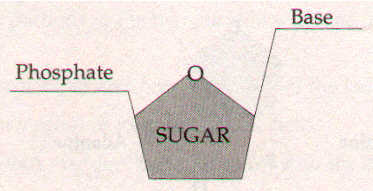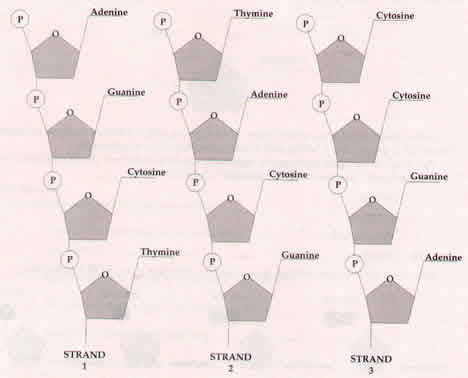Nucleic Acids
Nucleic acids are acidic macromolecules ("acids") found
in the nucleus of the cell ("nucleic"). Specifically,
they are DNA (deoxyribonucleic acid) and RNA (ribonucleic
acid).
The monomer of a nucleic acid is a nucleotide,
so nucleic acids are sometimes referred to as polynucleotides.
A nucleotide is made up of a sugar, a phosphate, and
a base.

Let's consider the structure of DNA first. RNA is very
similar to DNA, so once you understand how DNA is constructed,
it will be easy to understand how RNA is constructed.
The "base" in the figure above can be replaced by one
of four different chemicals referred to as "nucleotide
bases."
The four possible nucleotide bases for DNA are:
- adenine,
- guanine,
- cytosine, and
- thymine.
Since there are four types of DNA bases, there are
really four types of DNA nucleotides:

Notice that the sugar and the phosphate are constant
from nucleotide to nucleotide. The sugar and the phosphate
are known as the "backbone" of the nucleotide.
When nucleotides bond to form a long chain (a polynucleotide),
the chain is a strand of DNA. Because the four types
of nucleotides can bond in any order, many different
strands of DNA can be made. Here's an example of three
possible strands:

Each is a strand of DNA, and each is a polymer of nucleotides,
but each strand differs from others because of the order
in which the nucleotides are bonded together.
|

